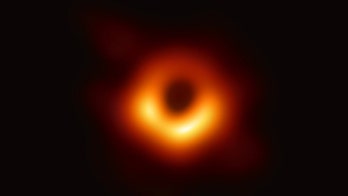

Overview of simulations that were generated for the training set of the PRIMO algorithm So how might machines help scientists to render a black hole image? The research team has answered this very question. Beyond this simple case, the versatility of machine learning has been demonstrated in numerous ways: from creating Renaissance-style works of art to completing the unfinished work of Beethoven.
M87 black hole series#
For example, if a computer is fed a series of different banana images-with sufficient training-it may be able to determine if an unknown image is or is not a banana. PRIMO relies on dictionary learning, a branch of machine learning which enables computers to generate rules based on large sets of training material. “It provides a way to compensate for the missing information about the object being observed, which is required to generate the image that would have been seen using a single gigantic radio telescope the size of the Earth.” “PRIMO is a new approach to the difficult task of constructing images from EHT observations,” said Lauer. Their publication, “The Image of the M87 Black Hole Reconstructed with PRIMO,” is now available in The Astrophysical Journal Letters. PRIMO, which stands for principal-component interferometric modeling, was developed by EHT members Lia Medeiros (Institute for Advanced Study), Dimitrios Psaltis (Georgia Tech), Tod Lauer (NOIRLab), and Feryal Özel (Georgia Tech). The width of the ring in the image is now smaller by about a factor of two, which will be a powerful constraint for our theoretical models and tests of gravity.” “Since we cannot study black holes up-close, the detail of an image plays a critical role in our ability to understand its behavior. “With our new machine learning technique, PRIMO, we were able to achieve the maximum resolution of the current array,” says lead author Lia Medeiros of the Institute for Advanced Study. In 2017, the EHT collaboration used a network of seven pre-existing telescopes around the world to gather data on M87, creating an “Earth-sized telescope.” However, since it is infeasible to cover the Earth’s entire surface with telescopes, gaps arise in the data-like missing pieces in a jigsaw puzzle.

M87 supermassive black hole originally imaged by the EHT collaboration in 2019 (left) and new image generated by the PRIMO algorithm using the same data set (right)


 0 kommentar(er)
0 kommentar(er)
